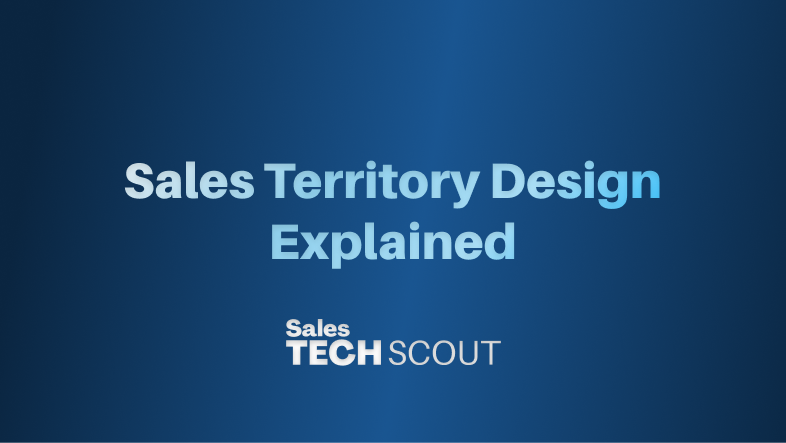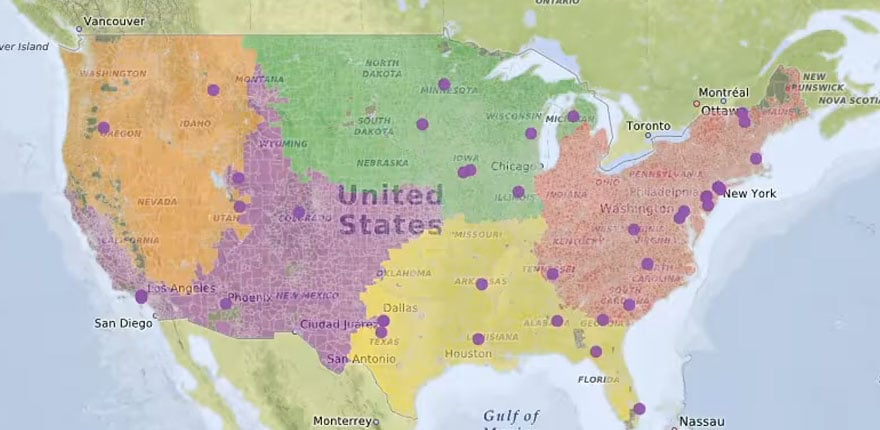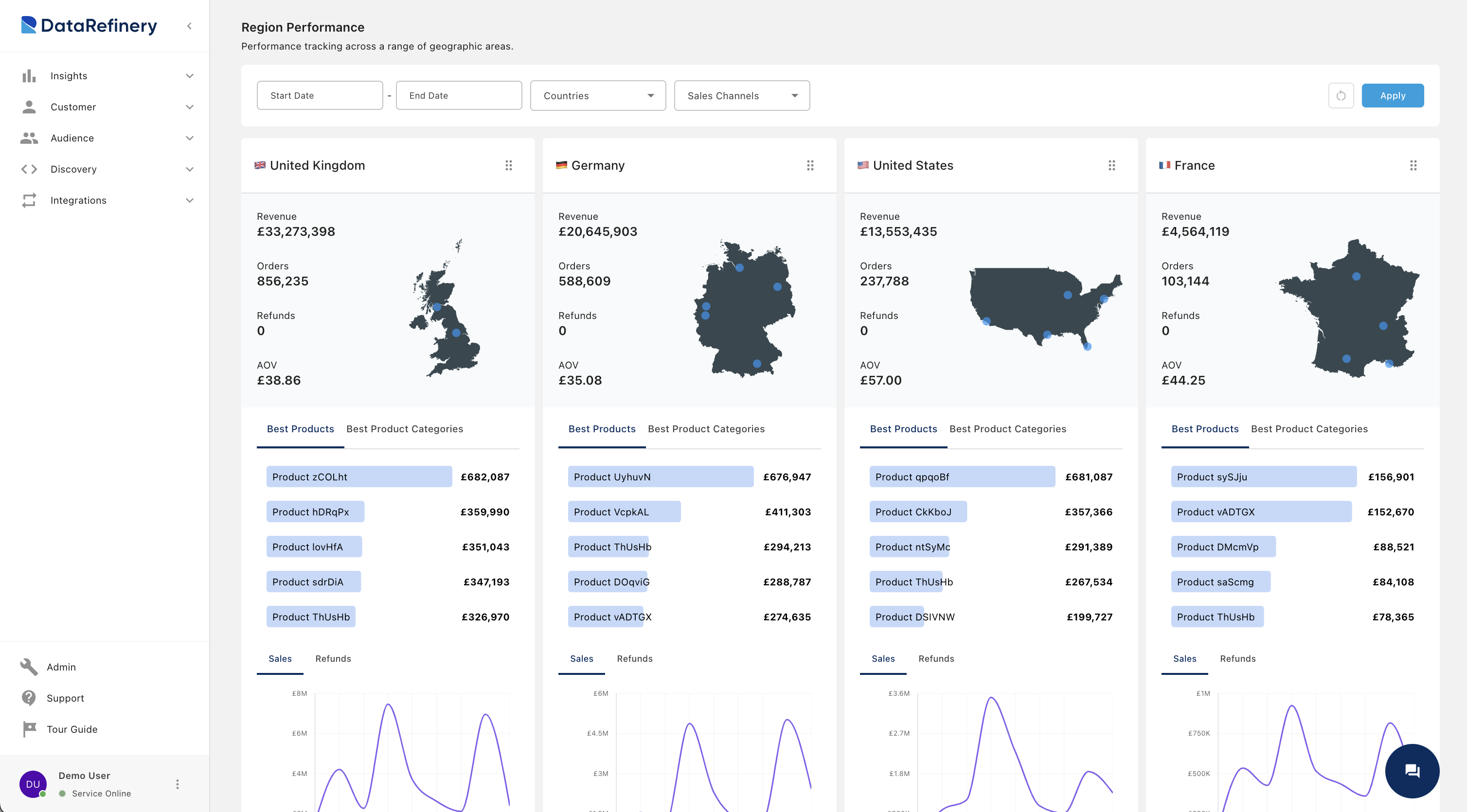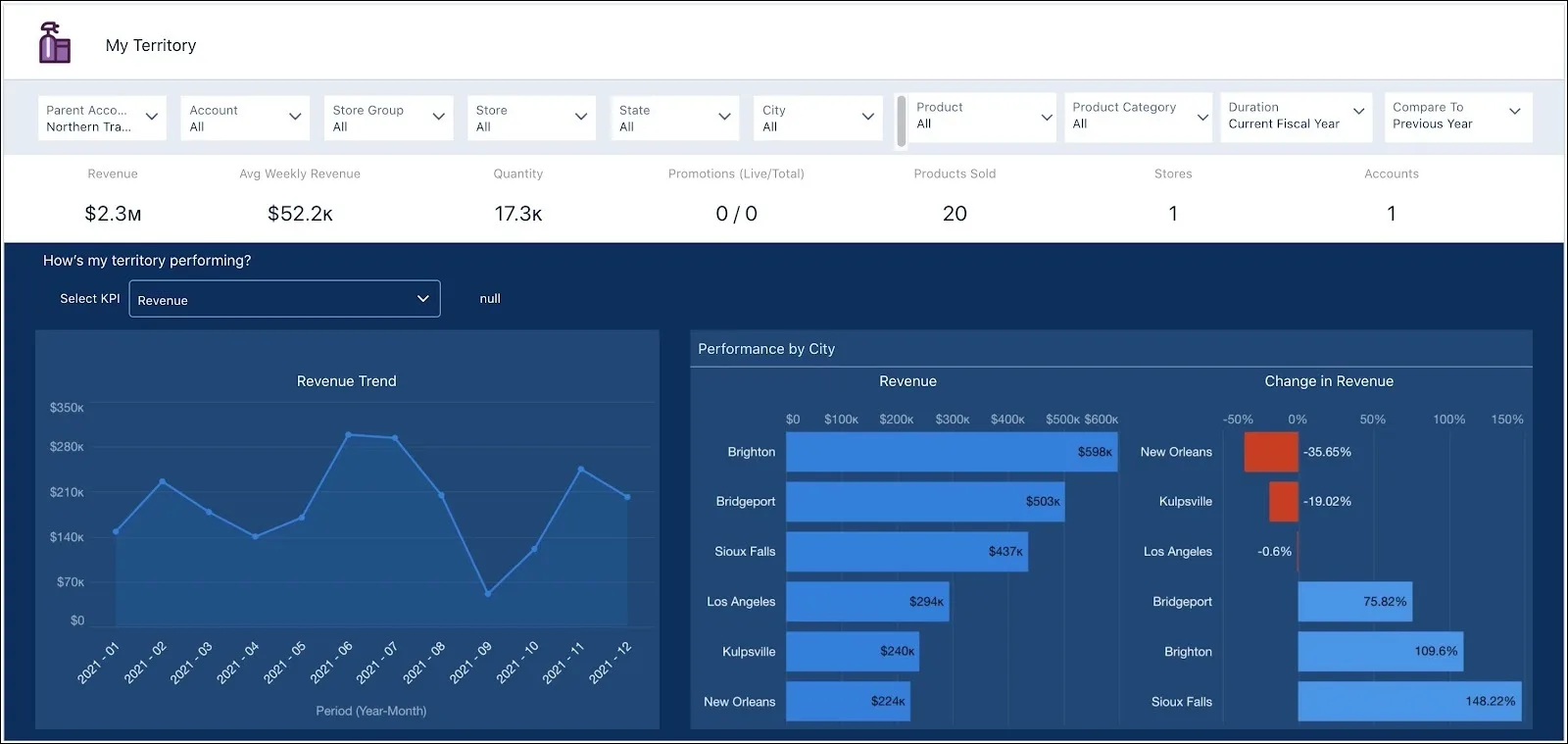Sales Territory Design Explained: What You Need to Know in 2025


Sales Territory Design Explained: What You Need to Know in 2025
Sales territory design remains one of the most critical yet underutilized strategies in modern sales operations. As markets become increasingly competitive and customer expectations continue to evolve, organizations that master territory design gain a significant advantage in revenue generation and market penetration.
This comprehensive guide explores everything B2B leaders need to know about sales territory design in 2025, from foundational concepts to advanced implementation strategies.
What is Sales Territory Design?
Sales territory design is the strategic process of dividing a market into distinct geographical or segment-based areas, with each territory assigned to specific sales representatives or teams.
This systematic approach ensures optimal coverage of prospects and customers while maximizing sales efficiency and revenue potential.
Modern territory design extends beyond simple geographical boundaries.
Today's most successful organizations incorporate multiple dimensions including:
- Geographic regions and postal codes
- Industry verticals and market segments
- Account size and revenue potential
- Product lines and service offerings
- Customer lifecycle stages

Why Territory Design Matters More Than Ever
Research from leading sales organizations indicates that well-designed territories can increase sales productivity by up to 35% while reducing customer acquisition costs by 20%.
In an era where every percentage point of efficiency matters, territory design has evolved from a nice-to-have to a business-critical capability.
The benefits extend beyond immediate sales metrics.
Proper territory design creates:
Enhanced Customer Experience: Customers receive more consistent, knowledgeable service when sales reps have focused expertise in their specific market or industry.
Improved Sales Rep Performance: Representatives develop deeper market knowledge and stronger relationships when working within well-defined territories.
Better Resource Allocation: Organizations can deploy marketing spend, support resources, and strategic initiatives more effectively across clearly defined markets.
Scalable Growth Framework: Well-designed territories provide a foundation for expansion, making it easier to onboard new representatives and enter new markets.
Core Components of Effective Sales Territory Design
Geographic Segmentation
Traditional geographic territories remain relevant, particularly for industries requiring face-to-face interactions or local market knowledge. Modern geographic segmentation considers:
- Travel time and logistics efficiency
- Regional market characteristics
- Local competition landscape
- Regulatory or cultural differences

Account-Based Segmentation
For B2B organizations, account-based territories often deliver superior results. This approach groups prospects and customers by:
- Annual revenue or company size
- Growth potential and strategic value
- Decision-making complexity
- Product or service requirements
Industry Vertical Territories
Vertical specialization allows sales representatives to develop deep industry expertise, leading to more consultative conversations and higher close rates. Common vertical approaches include:
- Technology and software companies
- Healthcare and life sciences
- Manufacturing and industrial
- Financial services and insurance
- Professional services
Product-Based Territories
Organizations with diverse product portfolios may benefit from product-focused territories, enabling representatives to become subject matter experts in specific solutions.
Sales Territory Design Strategy Framework
Phase 1: Market Analysis and Data Collection
Successful territory design begins with comprehensive market analysis. Organizations must gather and analyze:
Customer Data:
- Historical purchase patterns and revenue
- Geographic distribution of existing customers
- Customer satisfaction and retention metrics
- Growth trajectory and expansion potential
Market Intelligence:
- Total addressable market by segment
- Competitive landscape and market share
- Industry growth trends and projections
- Regulatory or economic factors affecting demand
Sales Performance Data:
- Individual and team productivity metrics
- Territory penetration rates
- Sales cycle length by market segment
- Win rates and deal size variations

Phase 2: Territory Optimization Modeling
Modern territory design leverages advanced analytics to optimize coverage and balance workload across the sales team. Key considerations include:
Workload Balance: Ensuring each territory has roughly equivalent opportunity potential, accounting for factors like deal size, sales cycle length, and market maturity.
Coverage Efficiency: Minimizing travel time and maximizing face-to-face interaction opportunities through strategic geographic clustering.
Growth Potential: Balancing established accounts with new business opportunities to maintain consistent pipeline development.
Phase 3: Implementation and Change Management
Territory redesign represents a significant change for sales organizations. Successful implementation requires:
Clear Communication: Explaining the rationale behind territory changes and how they benefit both representatives and customers.
Transition Planning: Providing adequate time and resources for account handoffs and relationship transfers.
Training and Support: Ensuring representatives have the tools and knowledge needed to succeed in their new territories.
Performance Monitoring: Establishing metrics and review processes to track the impact of territory changes.
Sales Territory Design Tools and Technology
Customer Relationship Management (CRM) Platforms
Modern CRM systems provide the foundation for territory design through comprehensive customer and prospect databases. Leading platforms offer:
- Geographic mapping and visualization
- Account segmentation and filtering
- Performance tracking and reporting
- Integration with external data sources

Specialized Territory Design Software
Dedicated territory design tools offer advanced capabilities beyond standard CRM functionality:
Geopointe provides sophisticated mapping and territory optimization features, including drive-time analysis and demographic overlays.
MAPS Territory Design offers AI-powered optimization algorithms that balance workload and opportunity across territories.
BadgerMaps combines territory mapping with route optimization for field sales teams.
Salesforce Territory Management delivers enterprise-grade territory design within the Salesforce ecosystem.

Analytics and Business Intelligence Platforms
Data visualization and analytics tools enhance territory design through:
- Market opportunity heat maps
- Performance comparison dashboards
- Predictive modeling for territory potential
- ROI analysis for territory changes

Real-World Sales Territory Design Examples
Technology Company: Vertical Specialization Success
A mid-market software company struggled with inconsistent sales performance across their geographic territories. Sales representatives were generalists, attempting to serve customers across all industries with limited success.
Challenge: Representatives lacked deep industry knowledge, resulting in longer sales cycles and lower close rates.
Solution: The company redesigned territories around five key verticals: healthcare, financial services, manufacturing, retail, and professional services.
Implementation:
- Reassigned representatives based on industry experience and interest
- Developed vertical-specific marketing materials and case studies
- Created industry-focused training programs
- Established vertical advisory boards with key customers
Results:
- 28% increase in average deal size
- 22% reduction in sales cycle length
- 35% improvement in customer satisfaction scores
- 15% increase in overall revenue within 12 months
Manufacturing Company: Geographic Optimization
A industrial equipment manufacturer with a national presence recognized inefficiencies in their geographic territory structure. Representatives were spending excessive time traveling, reducing face-to-face customer interactions.
Challenge: Poor geographic clustering resulted in high travel costs and limited customer face time.
Solution: Used territory optimization software to redesign territories based on drive-time analysis and customer density.
Implementation:
- Analyzed three years of customer location data
- Applied clustering algorithms to optimize geographic boundaries
- Reassigned accounts to minimize travel time
- Provided transition support for account transfers
Results:
- 40% reduction in travel time per representative
- 25% increase in customer meetings per month
- 18% improvement in territory penetration rates
- $200,000 annual savings in travel expenses
SaaS Company: Account-Based Territory Design
A growing SaaS company transitioned from geographic to account-based territories to better serve their diverse customer base ranging from small businesses to enterprise accounts.
Challenge: Geographic territories resulted in uneven workload distribution, with some representatives managing numerous small accounts while others focused on a few large enterprises.
Solution: Redesigned territories based on account size and complexity rather than geography.
Implementation:
- Segmented accounts into three tiers: Enterprise (>$500K ARR), Mid-Market ($50K-$500K ARR), and SMB (<$50K ARR)
- Created specialized teams for each segment
- Developed segment-specific sales processes and tools
- Established clear escalation paths between segments
Results:
- 32% increase in enterprise deal closure rate
- 45% improvement in SMB sales velocity
- 20% growth in average contract value across all segments
- Enhanced customer satisfaction through specialized service
Best Practices for Sales Territory Design
Regular Territory Review and Adjustment
Territory design is not a set-it-and-forget-it process. Market conditions, customer needs, and business priorities evolve continuously. Leading organizations conduct territory reviews at least annually, with quarterly assessments for rapidly changing markets.
Data-Driven Decision Making
Successful territory design relies on comprehensive data analysis rather than intuition or historical precedent. Key metrics to track include:
- Revenue per territory
- Number of accounts per representative
- Pipeline coverage and velocity
- Customer acquisition cost by territory
- Market penetration rates
Change Management Excellence
Territory changes directly impact sales representative compensation and performance. Organizations must invest in proper change management to ensure successful transitions:
- Involve representatives in the design process
- Provide clear timelines and expectations
- Offer training and support resources
- Monitor performance closely during transitions
Technology Integration
Modern territory design requires integration across multiple systems and data sources. Ensure your technology stack supports:
- Real-time data synchronization
- Automated territory assignments
- Performance tracking and reporting
- Mobile access for field representatives
Measuring Territory Design Success
Key Performance Indicators
Track these essential metrics to evaluate territory design effectiveness:
Revenue Metrics:
- Total revenue per territory
- Revenue growth rate
- Average deal size
- Revenue per sales representative
Activity Metrics:
- Number of qualified leads per territory
- Meeting-to-opportunity conversion rate
- Sales cycle length
- Territory penetration rate
Efficiency Metrics:
- Cost per acquisition by territory
- Travel time and expenses
- Administrative burden
- Time to productivity for new hires
Long-Term Success Indicators
Beyond immediate performance improvements, monitor these indicators of sustainable territory design success:
- Employee satisfaction and retention rates
- Customer satisfaction scores
- Market share growth
- Scalability of the territory model
Future Trends in Sales Territory Design
Artificial Intelligence and Machine Learning
AI-powered territory design tools are becoming increasingly sophisticated, offering:
- Predictive modeling for territory potential
- Automated territory optimization
- Real-time performance adjustments
- Intelligent account assignment recommendations
Dynamic Territory Management
Traditional static territories are giving way to dynamic models that adjust based on real-time market conditions, representative performance, and customer needs.
Integration with Account-Based Marketing
Territory design is becoming more closely aligned with marketing strategies, particularly in account-based marketing programs where sales and marketing teams coordinate efforts around specific target accounts.
Remote and Hybrid Selling Models
The shift toward remote and hybrid selling models is influencing territory design, with less emphasis on geographic proximity and more focus on expertise matching and relationship continuity.
Getting Started with Sales Territory Design

Assessment Phase
Begin with a comprehensive assessment of your current territory structure:
- Audit Current Performance: Analyze existing territory metrics and identify performance gaps
- Survey Stakeholders: Gather input from sales representatives, customers, and internal stakeholders
- Benchmark Against Industry Standards: Compare your approach with best practices in your industry
- Identify Improvement Opportunities: Prioritize areas with the greatest potential impact
Design Phase
Develop your new territory structure:
- Define Objectives: Establish clear goals for the territory redesign
- Choose Segmentation Approach: Select the most appropriate segmentation method for your business
- Model Different Scenarios: Test multiple territory configurations using available data
- Validate with Stakeholders: Review proposed changes with key stakeholders before implementation
Implementation Phase
Execute your territory redesign:
- Communicate Changes: Clearly explain the rationale and benefits to all affected parties
- Provide Training: Ensure representatives have the skills needed for success
- Monitor Progress: Track key metrics closely during the transition period
- Adjust as Needed: Make refinements based on initial results and feedback
Sales territory design represents a significant opportunity for revenue growth and operational efficiency in 2025. Organizations that invest in strategic territory design, supported by modern tools and data-driven insights, will gain competitive advantages in an increasingly challenging market environment.
The key to success lies in viewing territory design as an ongoing strategic capability rather than a one-time project. By continuously optimizing territories based on market feedback and performance data, sales organizations can maintain peak efficiency while delivering exceptional customer experiences.
Subscribe to Our Newsletter
To Never Miss a Thing






.avif)


